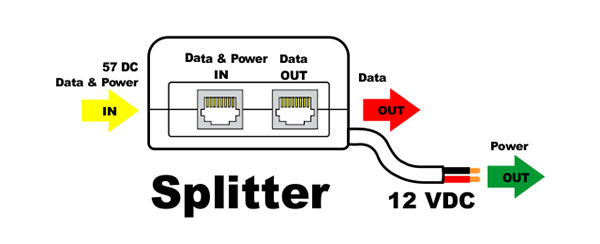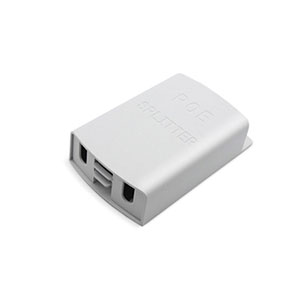What is a PoE Splitter?
In the intricate landscape of network technology, Power over Ethernet (PoE) splitters emerge as transformative devices, seamlessly blending simplicity with efficiency. As key players in modern connectivity, these devices play a pivotal role in revolutionizing how we power and communicate across networks. In this article, ATO industrial automation will introduce the components, working principles, advantages and applications of POE splitter.
Components of a PoE Splitter
A PoE splitter, though unassuming, comprises three fundamental components that collectively orchestrate its intricate functionality:
- Mainline Controller: Crafted from multiple semiconductor current sources, the mainline controller is the cornerstone of the PoE splitter. Its primary role is to convert standard DC power into Ethernet's DC power, ensuring stability and security in the power signal.
- AC Input Controller: Comprising multiple AC circuits (UPS), the AC input controller elegantly translates network power into standard DC power. It adjusts to Ethernet requirements, maintaining a delicate balance between data security and stability.
- DC Output Controller: An assembly of various DC switches, the DC output controller tailors data transmission by maintaining the lowest voltage output based on Ethernet signal strength. This meticulous adjustment ensures a seamless flow of information.
Working Principles of PoE Splitters
At its core, the working principle of a PoE splitter lies in its ability to separate network data signals and power signals. This division enables independent transmission, enhancing the stability and security of data transfer. The device goes through the following steps:
- The mainline controller transforms the standard DC power source into Ethernet's DC power.
- The AC input controller further adjusts this power to meet Ethernet requirements, ensuring a delicate balance between data security and stability.
- The DC output controller fine-tunes data transmission by maintaining the lowest voltage output based on Ethernet signal strength.
- This elegant orchestration ensures that power and data signals operate independently, providing a robust solution for modern network challenges.

Advantages of PoE Splitters
The adoption of PoE splitters offers several distinct advantages in the realm of network technology:
- Stability and Security: By separating power and data signals, PoE splitters enhance the stability and security of data transfer, ensuring a seamless flow of information across networks.
- Versatility: PoE splitters serve as ideal components for various intelligent terminal applications, allowing for the integration of power and data transmission in a simplified manner.
- Efficiency: The meticulous adjustment of voltage output based on Ethernet signal strength ensures efficient data transmission, reducing the likelihood of disruptions.
- Green Networking: PoE splitters contribute to energy efficiency, as they allow for the transmission of power and data through a single cable, minimizing energy consumption and supporting green networking initiatives.
Applications of PoE Splitters
The versatility of PoE splitters positions them as valuable assets in diverse applications:
- Security Systems: PoE splitters play a crucial role in powering and transmitting data for security cameras and access control systems, simplifying installation and maintenance.
- Telecommunications: In telecommunications, PoE splitters facilitate efficient power and data transmission for devices such as IP phones and network switches.
- Smart Lighting: The integration of PoE splitters in smart lighting systems allows for centralized control and power delivery, contributing to energy-efficient lighting solutions.
- Internet of Things (IoT): PoE splitters are instrumental in IoT applications, powering and connecting various devices seamlessly across networks.
In conclusion, Power over Ethernet (PoE) splitters represent a cornerstone in modern network technology. Their elegant design, efficient working principles, and versatile applications make them indispensable components, facilitating the seamless integration of power and data transmission in our interconnected world.

